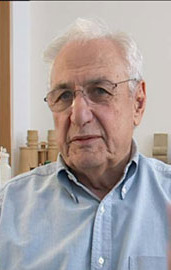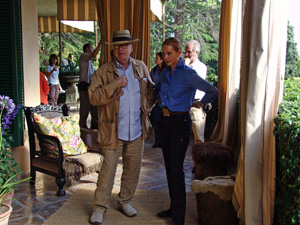Artists are rallying around the Rose Art Museum at Brandeis, whose collection — as I reported here recently — is still under threat of being broken up by the Administration.
 On May 17, Chuck Close, James Rosenquist, Frank Stella, Kiki Smith, Joel Shapiro, Fred Tomasselli, Richard Tuttle, James Sienna, Claes Oldenberg, Tara Donovan and Jim Dine are co-hosting a benefit to raise money for the legal costs of the suit to stop the sales.
On May 17, Chuck Close, James Rosenquist, Frank Stella, Kiki Smith, Joel Shapiro, Fred Tomasselli, Richard Tuttle, James Sienna, Claes Oldenberg, Tara Donovan and Jim Dine are co-hosting a benefit to raise money for the legal costs of the suit to stop the sales.
Pace Gallery, along with Meryl Rose, a Rose trustees and family member, and Jonathan Lee, chairman of the Rose board, are the other hosts. The benefit will take place at Pace, 545 West 22nd St. There’ll be “cocktails, hors d’oeuvres and cake!” Tickets cost $250.
The organizers have also created a website — here — for their effort, The Rose Preservation Fund (from which I grabbed the picture above). They write:
We do not believe the art is the university’s to sell. We are confident about the prospects for our case and believe that in the end precedent will be set for all museums. The Attorney General of Massachusetts is suing Brandeis as well.
An earlier update is here.
As I’ve said, it seems to me that Brandeis is not in the dire condition it claimed to be in a year ago: its actions have not backed up the crisis. So the art should not be for sale.
Meantime, btw, Brandeis President Jehuda Reinharz, who resigned last year, has finally told everyone where he is going: to the presidency of the Mandel Foundation in Cleveland, which has donated money to Brandeis. The news came out the other day, but publications are just catching up with it today. Here’s one article.

 Last Friday, a New York Times
Last Friday, a New York Times 
 Frank Gehry doesn’t believe in green buildings and he, designer of the signature Guggenheim Bilbao, doesn’t think much of the architect who is probably in most demand by museums — Renzo Piano. (I confess Piano’s popularity is puzzling to me, too; a matter of taste, I’d venture.)
Frank Gehry doesn’t believe in green buildings and he, designer of the signature Guggenheim Bilbao, doesn’t think much of the architect who is probably in most demand by museums — Renzo Piano. (I confess Piano’s popularity is puzzling to me, too; a matter of taste, I’d venture.) 
 The
The 